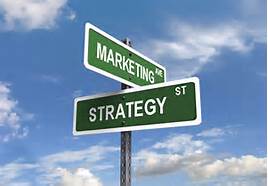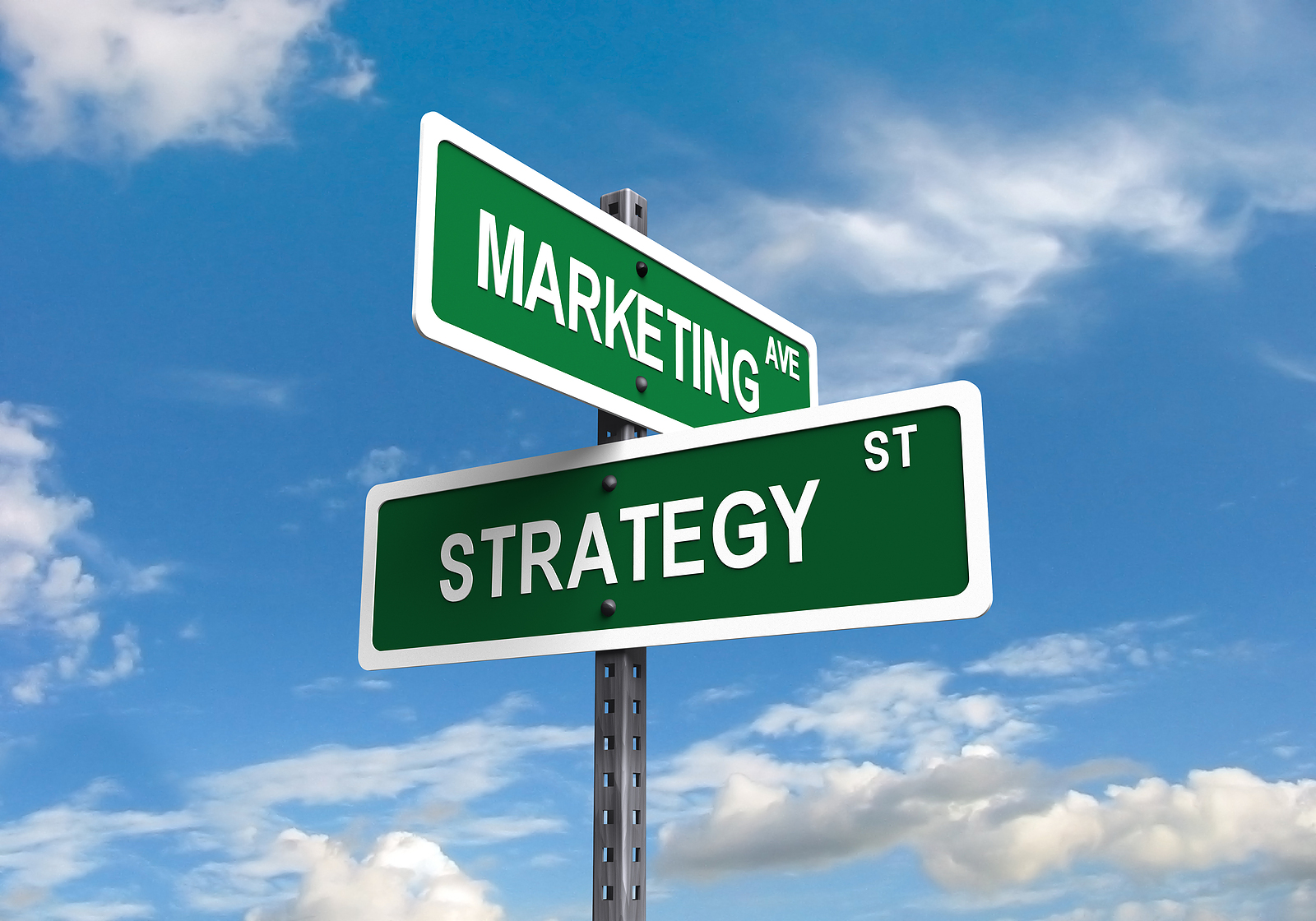
by Fronetics | Feb 4, 2015 | Blog, Data/Analytics, Marketing, Social Media, Strategy

Inbound marketing costs less than outbound marketing. And it works.
The internet has empowered customers. It has provided customers with new methods for finding and researching companies. It has also provided customers with new methods for finding, researching, and buying products.
The internet has changed marketing from a one way street to a two way street.
Customers no longer rely solely on TV/newspaper/magazine ads, billboards, direct mail, email, banner ads, and other traditional outbound marketing channels to learn about new products. These methods are now viewed as too intrusive, especially among younger consumers who regularly tune out the tactics.
Customers want to find YOU (not the other way around)
A study conducted by the Corporate Executive Board’s (CEB) Marketing Leadership Council found that the average customer progresses nearly 60 percent of the way through the purchase decision-making process before engaging with a sales rep. How are they able to do this? By going online. Customers are using websites, blogs, and social media.
A study by Pardot found that 72 percent of B2B buyers begin their research with Google. Other starting points for research: personal networks (15.58%), Yahoo (5.53%), Bing (2.76%), LinkedIn (2.51%) and social networks (2.01%).
What is inbound marketing?
Inbound marketing focuses on consumers finding you.
Inbound marketing meets your customers and prospects where they are, with the information for which they are looking, and at the right moment. Inbound marketing provides value, builds trust and authority, which ultimately result in increased leads and higher conversion rates.
The components of inbound marketing are pretty simple: Create and distribute fresh, relevant, targeted content specifically designed to reach a target audience.
Strategies include:
- Social media marketing
- Blogging and content marketing
- Podcasts
- White papers
- ebooks
- Infographics
- Search engine optimization (SEO)
- Case studies
What is outbound marketing?
In contrast, outbound marketing focuses on paying to broadcast your message to find consumers who will listen to you.
Outbound marketing is a value-driven numbers game. The more banner ads, print ads, and direct mailings you pay for, the more people see your product, and the more sales you’ll make. However, it is costly. Outbound marketing costs 38% more than inbound marketing. The average cost per lead using outbound marketing is $373. The average cost per lead using inbound marketing is $143.
Outbound marketing strategies include:
- Print ads
- TV ads
- Banner ads
- Telemarketing
- Cold calling
- Press releases
- Trade shows
- Email marketing
- Direct mail
Inbound marketing makes sense
Inbound marketing just makes sense. It is a proven methodology and it costs less. Isn’t it time to meet your customers where they are? Get online. Create content. Distribute content. Engage with customers. Optimize your website.
Fronetics Strategic Advisors is a management consulting firm focused on strategy and inbound marketing. When it comes to inbound marketing we take a different approach than other firms. This is because of our business experience and background. We know ROI is important, so our approach is data driven and produces results.
We understand that developing and implementing an inbound marketing strategy can seem daunting. We are here to help. We are happy to take a few minutes and look at your current strategy and give you ideas on how to start, or suggestions on what you can do to make your current strategy more successful. We are also happy to talk with you about what we can do.
We’d love to talk with you about how you can grow your business through inbound marketing.


by Fronetics | Feb 4, 2015 | Blog, Data/Analytics, Marketing, Social Media, Strategy

Inbound marketing costs less than outbound marketing. And it works.
The internet has empowered customers. It has provided customers with new methods for finding and researching companies. It has also provided customers with new methods for finding, researching, and buying products.
The internet has changed marketing from a one way street to a two way street.
Customers no longer rely solely on TV/newspaper/magazine ads, billboards, direct mail, email, banner ads, and other traditional outbound marketing channels to learn about new products. These methods are now viewed as too intrusive, especially among younger consumers who regularly tune out the tactics.
Customers want to find YOU (not the other way around)
A study conducted by the Corporate Executive Board’s (CEB) Marketing Leadership Council found that the average customer progresses nearly 60 percent of the way through the purchase decision-making process before engaging with a sales rep. How are they able to do this? By going online. Customers are using websites, blogs, and social media.
A study by Pardot found that 72 percent of B2B buyers begin their research with Google. Other starting points for research: personal networks (15.58%), Yahoo (5.53%), Bing (2.76%), LinkedIn (2.51%) and social networks (2.01%).
What is inbound marketing?
Inbound marketing focuses on consumers finding you.
Inbound marketing meets your customers and prospects where they are, with the information for which they are looking, and at the right moment. Inbound marketing provides value, builds trust and authority, which ultimately result in increased leads and higher conversion rates.
The components of inbound marketing are pretty simple: Create and distribute fresh, relevant, targeted content specifically designed to reach a target audience.
Strategies include:
- Social media marketing
- Blogging and content marketing
- Podcasts
- White papers
- ebooks
- Infographics
- Search engine optimization (SEO)
- Case studies
What is outbound marketing?
In contrast, outbound marketing focuses on paying to broadcast your message to find consumers who will listen to you.
Outbound marketing is a value-driven numbers game. The more banner ads, print ads, and direct mailings you pay for, the more people see your product, and the more sales you’ll make. However, it is costly. Outbound marketing costs 38% more than inbound marketing. The average cost per lead using outbound marketing is $373. The average cost per lead using inbound marketing is $143.
Outbound marketing strategies include:
- Print ads
- TV ads
- Banner ads
- Telemarketing
- Cold calling
- Press releases
- Trade shows
- Email marketing
- Direct mail
Inbound marketing makes sense
Inbound marketing just makes sense. It is a proven methodology and it costs less. Isn’t it time to meet your customers where they are? Get online. Create content. Distribute content. Engage with customers. Optimize your website.
Fronetics Strategic Advisors is a management consulting firm focused on strategy and inbound marketing. When it comes to inbound marketing we take a different approach than other firms. This is because of our business experience and background. We know ROI is important, so our approach is data driven and produces results.
We understand that developing and implementing an inbound marketing strategy can seem daunting. We are here to help. We are happy to take a few minutes and look at your current strategy and give you ideas on how to start, or suggestions on what you can do to make your current strategy more successful. We are also happy to talk with you about what we can do.
We’d love to talk with you about how you can grow your business through inbound marketing.


by Fronetics | Jan 1, 2015 | Blog, Content Marketing, Marketing, Strategy, Talent

93% of B2B marketers use content marketing. However, less than half (42%) of B2B marketers say that they are effective at content marketing. One of the reasons these marketers are ineffective: bad content.
All content is not created equal. There is good content. There is bad content. Good content drives profitable customer action. Bad content does not drive profitable customer action.
You need good content.
What is good content? Here are 3 elements of good content:
1. Good content is original
Good content is content that is unique. It is not content that is copied and pasted. It is not regurgitated content. Not only is original content SEO friendly, original content is customer-friendly. 70% of consumers prefer to get to know a company through original articles.
2. Good content stands out
There are more than 27 million pieces of content shared each day. If you want your content to get lost, create bad content. If you want content that stands out you need content that differs from that of the rest of the pack. You can make content stand out by using winning headlines, graphics, images, infographics, and with great writing.
3. Good content attracts and engages current and prospective customers
Every single piece of content that makes it onto your website and blog needs to be content that is created with your current and prospective customers in mind.
Content that attracts and engages is not a sales pitch. Rather, it is content that communicates valuable information to customers and prospects so that they have the knowledge to make better informed decisions. Moreover, it is content that establishes your business as a reliable source of knowledge – as the thought-leader within the industry.
Good content excites customers and prospects and makes them want to reach out to you.
You get what you pay for
Content creation takes time. However, time is often hard to come by. 69% of content marketers feel a lack of time is their greatest challenge. Moreover, almost 50% of marketers struggle with producing enough content, and producing content that engages.
Faced with constraints of time and volume, quality often takes a hit. In some cases the company itself creates and distributes content of poor quality. In other cases, the company chooses to outsource content creation, but does not do their due diligence with respect to the outsource partner and the quality of content that is created.
Good content is not inexpensive. That being said, good content is worth its weight in gold. This is not something I just say, this is something I know. I gave several low cost content options a try.
I began by conducting a search for companies that offered low-cost content (content that costs less than $20 per blog post). I then narrowed the field down even more by researching which of these companies had the highest rankings and customer satisfaction rates. I then selected two companies and decided to give it a go.
The results were dismal. The content was not good content.
If you want content that is good content and will drive profitable results you need to invest. You need to either invest in someone in-house, or you need to conduct your due diligence and find an outsource partner that can create good content for your company.
Interested in learning more about content? Check out these articles:
Or simply,


by Fronetics | Jan 1, 2015 | Blog, Content Marketing, Marketing, Strategy, Talent

93% of B2B marketers use content marketing. However, less than half (42%) of B2B marketers say that they are effective at content marketing. One of the reasons these marketers are ineffective: bad content.
All content is not created equal. There is good content. There is bad content. Good content drives profitable customer action. Bad content does not drive profitable customer action.
You need good content.
What is good content? Here are 3 elements of good content:
1. Good content is original
Good content is content that is unique. It is not content that is copied and pasted. It is not regurgitated content. Not only is original content SEO friendly, original content is customer-friendly. 70% of consumers prefer to get to know a company through original articles.
2. Good content stands out
There are more than 27 million pieces of content shared each day. If you want your content to get lost, create bad content. If you want content that stands out you need content that differs from that of the rest of the pack. You can make content stand out by using winning headlines, graphics, images, infographics, and with great writing.
3. Good content attracts and engages current and prospective customers
Every single piece of content that makes it onto your website and blog needs to be content that is created with your current and prospective customers in mind.
Content that attracts and engages is not a sales pitch. Rather, it is content that communicates valuable information to customers and prospects so that they have the knowledge to make better informed decisions. Moreover, it is content that establishes your business as a reliable source of knowledge – as the thought-leader within the industry.
Good content excites customers and prospects and makes them want to reach out to you.
You get what you pay for
Content creation takes time. However, time is often hard to come by. 69% of content marketers feel a lack of time is their greatest challenge. Moreover, almost 50% of marketers struggle with producing enough content, and producing content that engages.
Faced with constraints of time and volume, quality often takes a hit. In some cases the company itself creates and distributes content of poor quality. In other cases, the company chooses to outsource content creation, but does not do their due diligence with respect to the outsource partner and the quality of content that is created.
Good content is not inexpensive. That being said, good content is worth its weight in gold. This is not something I just say, this is something I know. I gave several low cost content options a try.
I began by conducting a search for companies that offered low-cost content (content that costs less than $20 per blog post). I then narrowed the field down even more by researching which of these companies had the highest rankings and customer satisfaction rates. I then selected two companies and decided to give it a go.
The results were dismal. The content was not good content.
If you want content that is good content and will drive profitable results you need to invest. You need to either invest in someone in-house, or you need to conduct your due diligence and find an outsource partner that can create good content for your company.
Interested in learning more about content? Check out these articles:
Or simply,


by Fronetics | Nov 25, 2014 | Blog, Internet of Things, Marketing, Social Media, Strategy, Supply Chain

The 2014 UPS B2B Buyers Insight Study found that companies need to have a strong online presence to grow their business.
Buyers are looking for information online
Buyers are conducting research on industrial suppliers online. Sixty-eight percent of buyers research supply purchases via supplier website, and 52 percent use search engines.
In their report, UPS and TNS discuss the importance of a strong online presence:
“Given buyers’ high satisfaction levels with supplier performance on key selection criteria, and considering that web-based research is most preferred, it’s reasonable to infer that many buyers consider online research essential to their supplier selection process. The use of search engines means that suppliers may be at greater risk of losing share to companies whose products are perhaps easier to find, in stock or competitively priced. On the other hand, suppliers whose products are easy to find online and meet buyers’ criteria may also stand to gain customers.”
Being able to buy online is more important to buyers than a sales rep
Being able to access information about products online and being able to make purchases online is more important to buyers than sales representatives and printed catalogs.
Respondents were asked to rate attributes with respect to deciding from which industrial supplies vendor to purchase. Seventy-eight percent of respondents rated product information on the supplier website as “extremely important” or “very important.” Seventy-four percent of respondents rated the ability to make purchases on the supplier’s website as “extremely important” or “very important.” In contrast, fifty-eight percent of respondents rated having a sales representative as “extremely important” or “very important.” Fifty-four percent of respondents rated having a hardcopy product catalog as “extremely important” or “very important.”
Buyers like to purchase through websites
Sixty-three percent of industrial supplies buyers reported that they purchase through websites (directly from suppliers or via a third-party provider).
Sixty-seven percent of buyers responded that the ability to order through a supplier’s website is considered “extremely important” or “very important”
If you think your current customers don’t care if you don’t offer the ability to purchase products online – think again. The survey found that 34 percent of buyers say that they have gone outside of their existing supply base to make an online purchase.
Meet your customers online
Having a strong online presence is an essential component to your business strategy. If you want to grow your business you need to be online. UPS and TNS sum this up nicely:
“Be in the right place when buyers are looking: Having a superior supplier website with stellar functionality means little if buyers can’t find the site or don’t know it’s available. Making sure products and supplier information can be found easily by search engines (SEO), and being visible when buyers search for products (SEM), are essential strategies for retaining and increasing customer base.”







